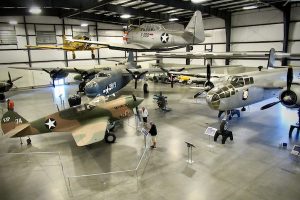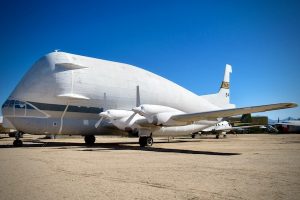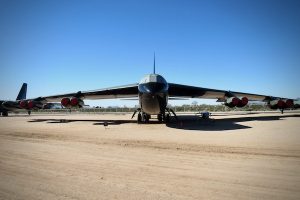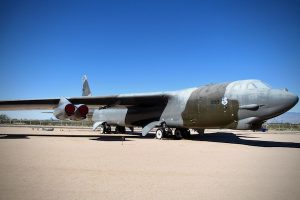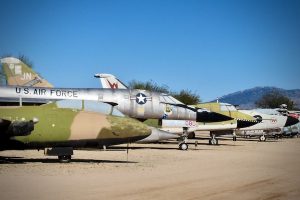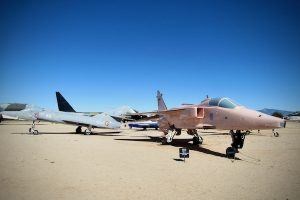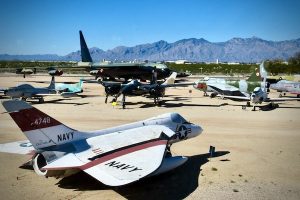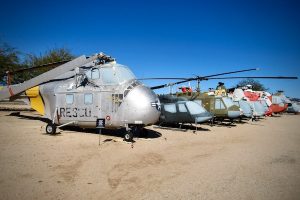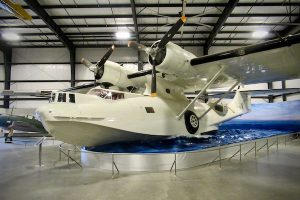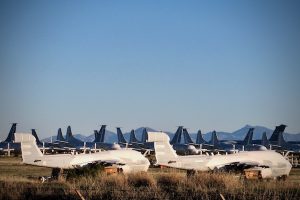
I want to take a tour of the 309th Aerospace Maintenance and Regeneration Group’s aircraft storage and preservation facility – commonly known as the “Boneyard” – at Davis-Monthan AFB in Tucson, but in an epic tourist fail, I have no idea you need to make reservations at least 16 days (or more) prior to your visit. You can only visit the site, with 4,400+ aircraft the world’s largest, on a tour. And you also need security clearance, because you’re on a friggin’ military base.
Oh well. In my defense, I did actually check the website – but just 48 hours before my arrival, which is sort of how I operate when I visit a city that’s new to me.
So, where else am I going to find so many aircraft on display? Well, just my luck, around the corner is the Pima Air & Space Museum. It’s not 2,600 acres, like the Boneyard, but for my purposes I think 80 acres (six hangars and a huge back lot) will be more than enough to get my fill of flying machines.
Besides, I don’t know diddly-squat about aircraft, other than it was really nice to sit in business class when I worked for Arthur Andersen and lived in Singapore.
But that was then. Now I can tell you the Boeing B-52D Stratofortress went into service in 1956, while the B-52G came in 1959. I can also tell you that the Aero Spacelines International Super Guppy wide-bodied cargo plane is the successor to the Pregnant Guppy, which made its debut in 1962. And that both were designed from the old Boeing 377 Stratocruiser. Who knew!
The museum devotes three hangars to WWII aircraft, and there are senior volunteers – mostly ex-military – who bring the machines and their stories to life.
Sure, I am enamored by the unbelievably cool lines of the Lockheed SR-71 Blackbird, but it’s the WWII story of the Consolidated PBY Catalina that amazes me most.
This clunky flying boat saved 56 men from the USS Indianapolis, which went down in 12 minutes after being torpedoed by a Japanese sub. About 300 went down with the ship, but the remaining 890 were left for five days in open water. Only 316 survived.
The PBY Catalina could not fly under the weight of 56 men, so it was used as a lifeboat until help could arrive. Men were literally strapped to its wings to keep them from the sharks of the Philippine Sea. It’s an amazing story – and one you probably won’t get at the Boneyard … which reminds me.
If you just want a little taste of the Boneyard, drive along East Irvington Road and South Kolb Road. There are places you can pull over and take a photo – like the one the Canadians took of me (above). No reservation required.
NOTE: Of the 16 million men and women who served the United States in World War II, only 389,292 were still around in 2019, according to U.S. Department of Veterans Affairs data. And they are dying at a rate of approximately 294 per day. Once this generation is gone, their stories will be lost forever. So if you are fortunate enough to know a WWII vet, talk with them. Get their stories. Share them. You will be rewarded. Promise.


